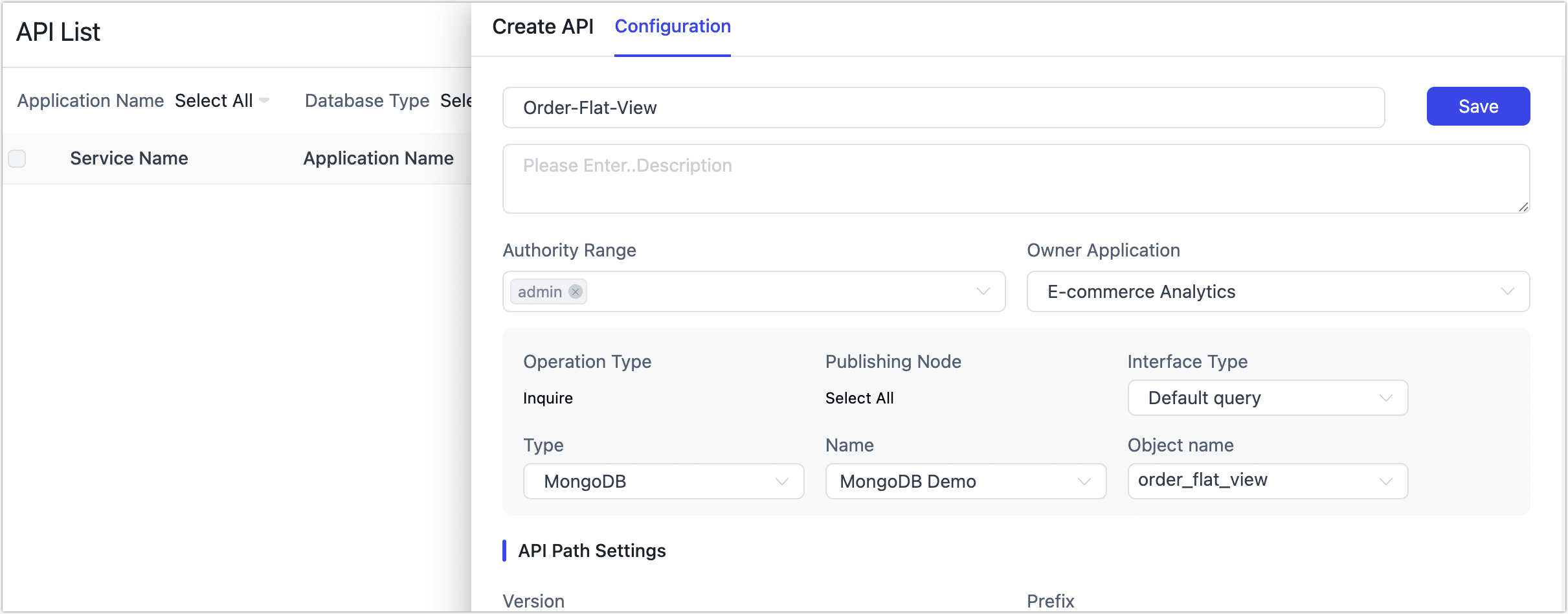Step 4: Publish Your View as an API
After creating your Incremental Materialized View, you can easily publish APIs that provide flexible read-only access to your view. This lets your marketing platforms, BI dashboards, or any downstream services securely access up-to-date data in real time—without additional ETL or complex SQL queries.
Procedure
Follow these steps to publish an API service that provides access to your materialized view.
Create an Application
Applications help organize your APIs by business domain. In this example, you’ll create an app called E-commerce Analytics to keep all related services together.
In the left navigation panel, go to Data Services > Application List.
In the top right corner, click Create Application.
In the dialog, enter a name and description, then click Save.

Create an API Service.
Go to Data Services > Service Management in the navigation panel.
Click Create Service in the top right, then fill in the basic service details:

Service Name: Enter a clear, meaningful name for easy identification.
Access Scope: Define which roles can call this API.
Haven’t set up roles yet? You can leave this blank for now and add roles later.
Own Application: Select the application you just created, such as E-commerce Analytics.
Type: Choose MongoDB as the data source type.
Name: Select the Incremental Materialized View you created earlier—for example,
order_flat_view.API Path Settings: You can keep the default endpoint or customize it as needed.
Click Save.
Publish the API.
Locate the API service you just created in the list. In the actions column, click Publish to make it available for downstream systems.
What’s next?
Now that your API service is configured, complete the access and delivery setup:
- Create a Client: Define access control by binding one or more Roles, and generate your authentication credentials (token-based or basic auth).
- Create a Server (API Endpoint): Define the public-facing API path for your data service, which downstream systems like BI tools or marketing platforms will call.
Once configured, your downstream applications can securely fetch fresh, high-value data via REST or GraphQL—without ever querying the production database.